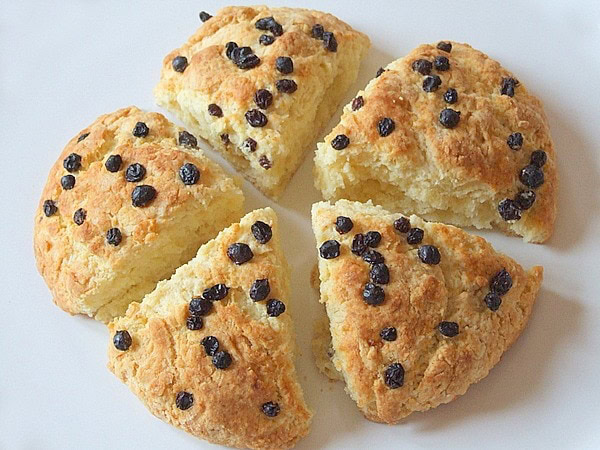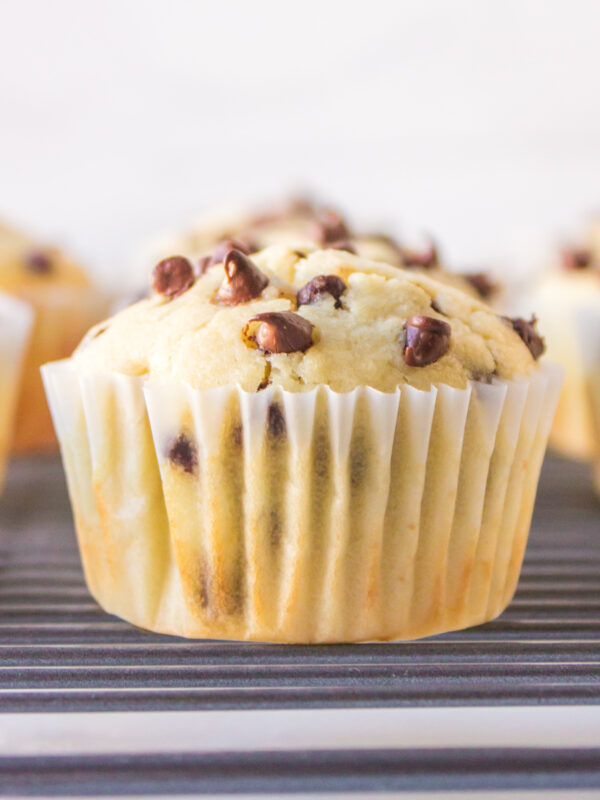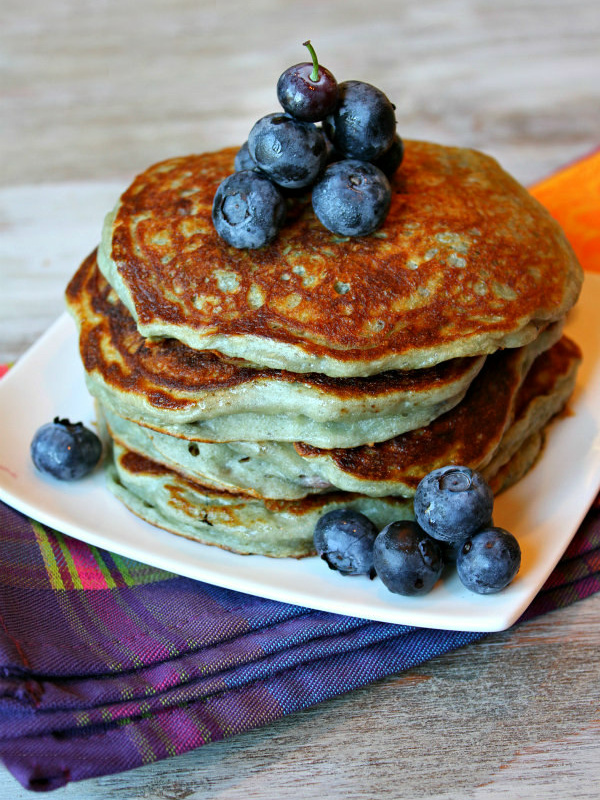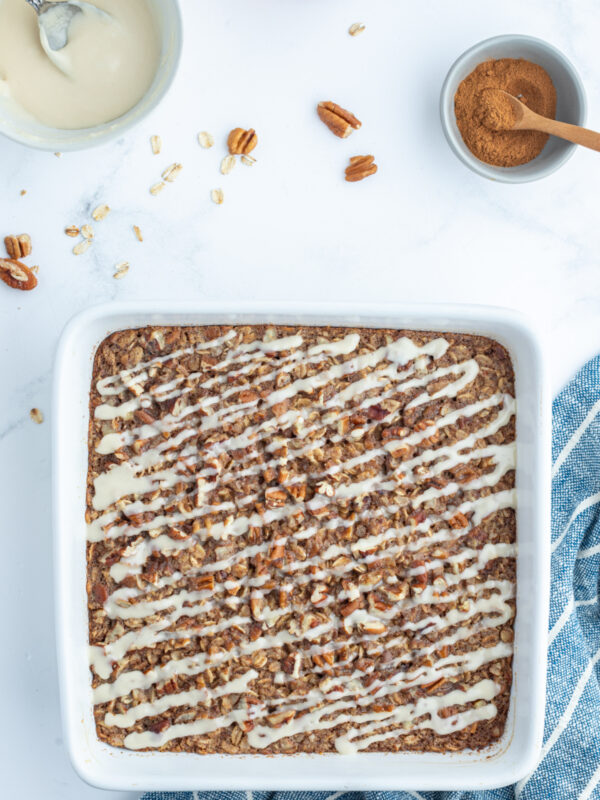This is a traditional Cream Scones recipe originally from Dorie Greenspan (queen of baking!)
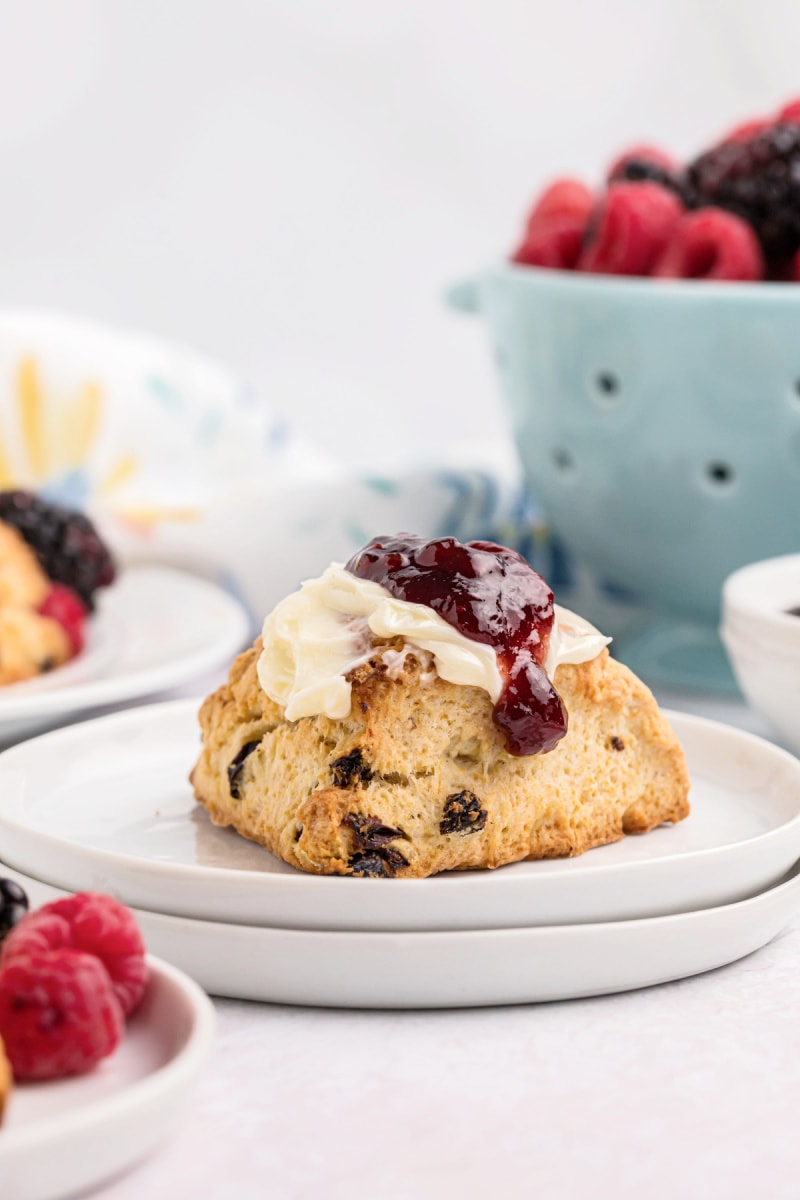
This is one of the best scones recipes that I have found. Not only does it fill any craving for traditional scones, but its a delicious tea-time treat. This is one of the best scones recipe for any time of year, especially during celebrations.
In fact, these scones are one of my favorite things to bring to an event like a bridal shower or a birthday party.
What’s the difference between American scones and English scones?
British scones are more like an American biscuit- but a bit taller and fluffier. They’re meant to be eaten with butter and jam or clotted cream. American scones are usually dense and sweet. Many times they contain fruit. And they’re most often triangular in shape.

Ingredients needed:
- egg
- heavy cream
- all purpose flour
- white sugar
- baking powder
- salt
- unsalted cold butter
- currants
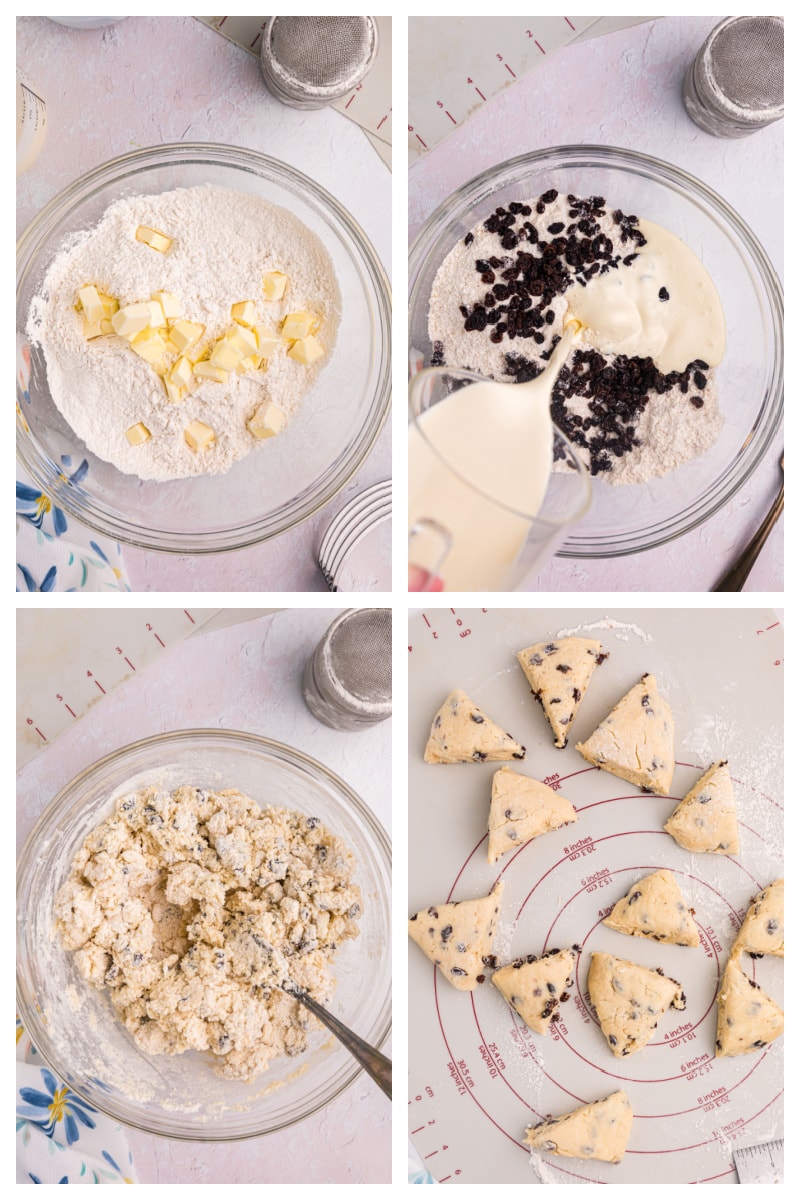
How to make Cream Scones:
The complete, printable recipe is at the end of this post.
Center an oven rack in the oven and preheat the oven to 400°F. Line a baking sheet with parchment paper or a silicone mat.
In a small bowl, stir the egg and heavy whipping cream together.
Combine flour, sugar, baking powder and salt together in a large bowl. Drop in the butter and, using your fingers, toss to coat the pieces of butter with flour. Quickly, working with your fingertips or a pastry blender, cut and rub the butter into the flour mixture until the mixture is pebbly.
Pour the egg, cream and currants over the dry ingredients and stir with a fork or a wooden spoon just until the dough, which will be wet and sticky, come together. (Don’t overdo it.) Still in the bowl, gently knead the dough by hand, or turn it with a rubber spatula 8 to 10 times.
Turn the dough onto a lightly floured surface. Divide it in half. Working with one piece at a time, pat the dough into a rough circle that’s about 5 inches in diameter, use a sharp knife to cut scones into 6 wedges and place it on the baking sheet. (At this point, the scones can be frozen on the prepared baking sheet, then wrapped airtight. Don’t defrost before baking, just add about 2 minutes to the baking time.)
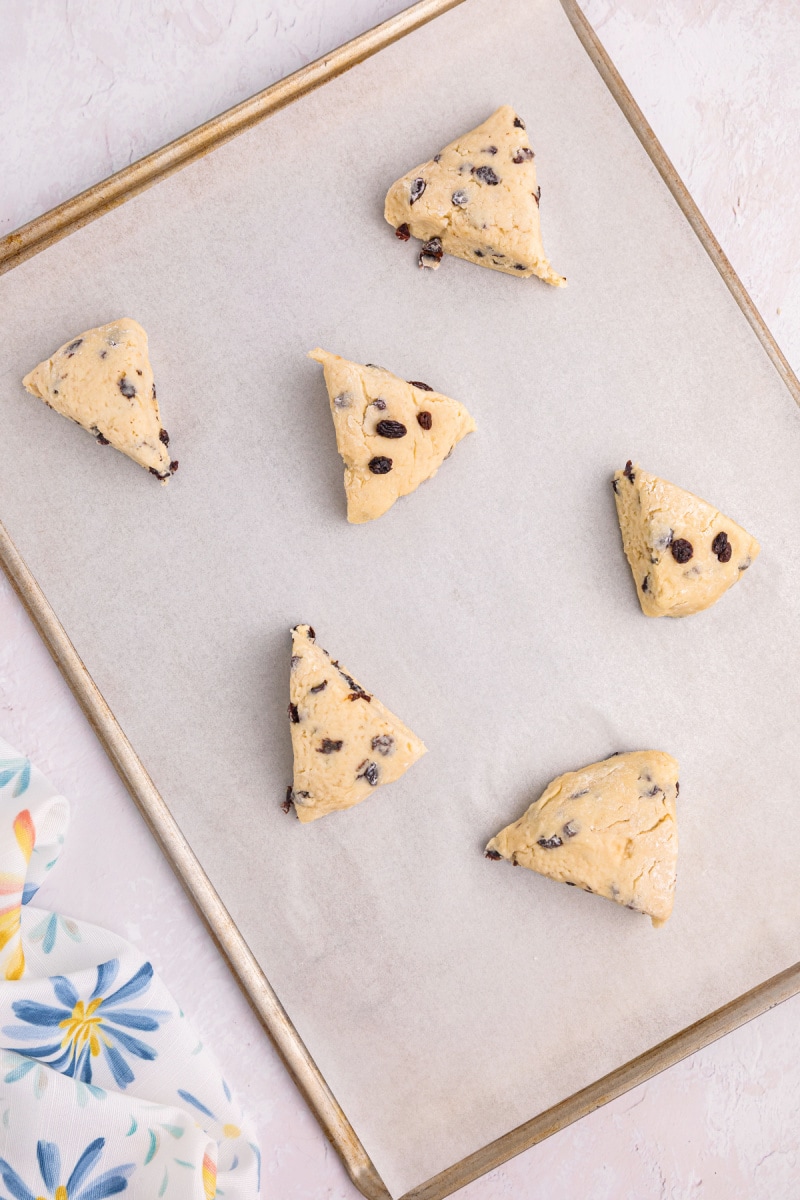
Bake the scones for 20 to 22 minutes, or until their tops are golden and firm. Transfer them to a rack and cool for 10 minutes before serving, or wait for them to cool to room temperature.
Tips and Tricks for the best scones
I love scones- especially classic cream scones with warm coffee and tea. There is something that makes the event even more special when you take the time to make scones from scratch.
Since I have been making scones for any event I can these past couple of years, I have learned a couple of tricks along the way. Here are a few things I have learned to make these scones the talk of the party:
- In order to make clean up a breeze, lay down a piece of parchment paper on your work surface before placing the dough on a lightly floured surface and rolling with a rolling pin. This makes transferring the dough easier and reduces your baking mess.
- Keep the dry ingredients and the wet ingredients separate until its time to blend- this ensures an even distribution of the flour mixture and really complements the taste.
- Cold butter is what you should be using for this recipe. To truly help the flavor, make sure you use unsalted butter.
- If you don’t have a pastry blender handy, a food processor or an old fashioned fork will work great. For tender scones, make sure you don’t over blend.
- To make the perfect-shaped pastry, cut scones with either a biscuit cutter, cookie cutter or a pastry cutter to help make the shape of the scones.
- I have tried every flour out there when testing scone recipes. In my research, all purpose flour always turns out the best.
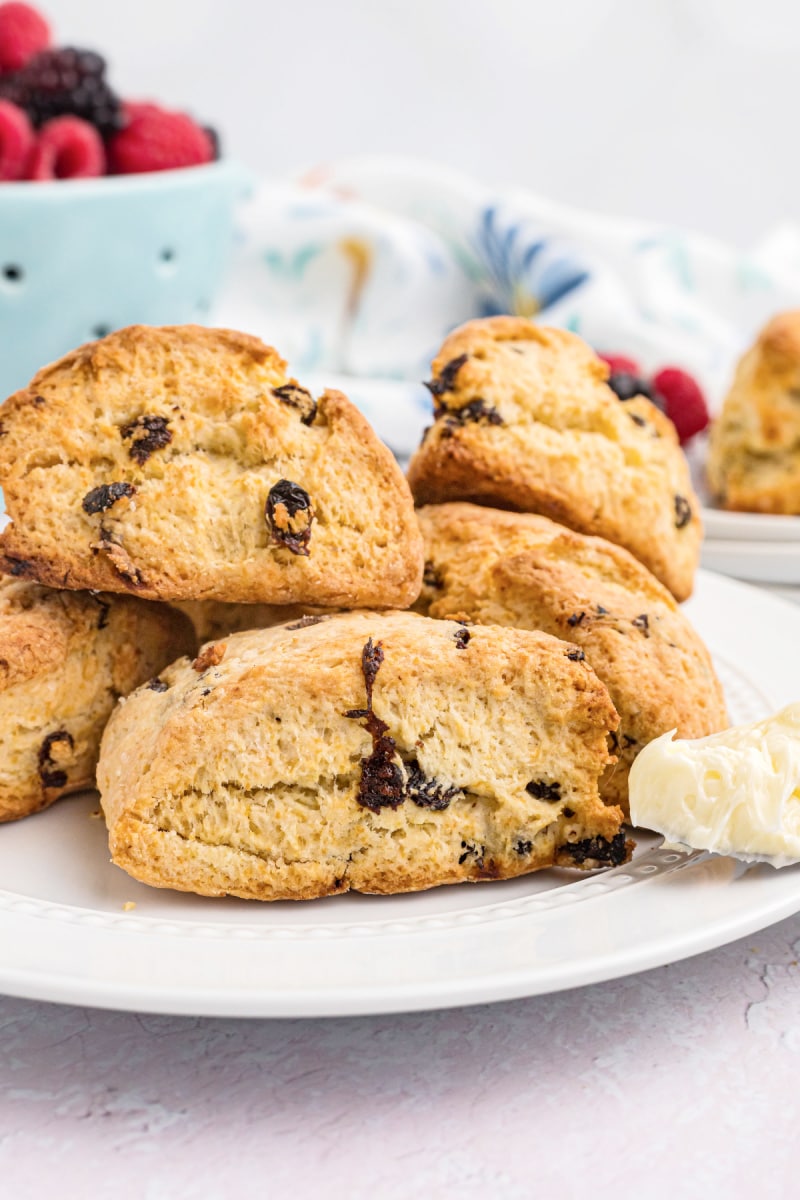
A note about currants:
It’s best to use currants that are fresh out of the box. You’ll find them near the raisins in your market. They’re a little more moist and plump fresh out of the box than those that may be have lying around for a while. If the currants you’ve purchased are rather dried out and hard, put them in a bowl with hot tap water for a few minutes and then drain thoroughly before adding to the scone dough.
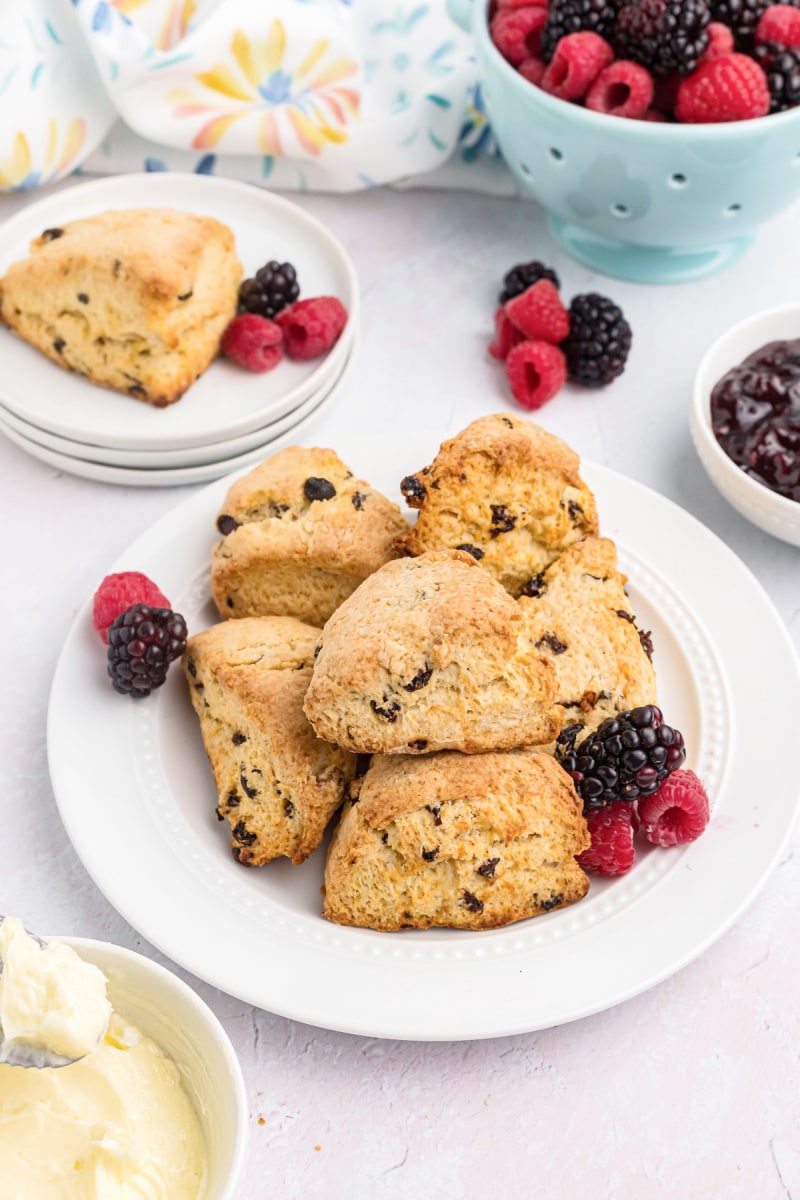
Best additional ingredients to add to the scone dough
Classic scones are full of flavor that can be diversified in so many ways. Whenever I am making a few dozen scones, I love to get creative with different ingredients.
While this recipe highlights adding currants, here are a few other options if you want to personalize everyones own scones.
For best results, fold in one of the following or sprinkle onto the tops of the scones before topping with egg wash and adding it to the oven.
- chocolate chips
- coarse sugar
- dice up dried fruit into small pieces (my favorite is dried cherries)
- lemon curd with some homemade lemon zest (simply make with a box grater and a lemon)
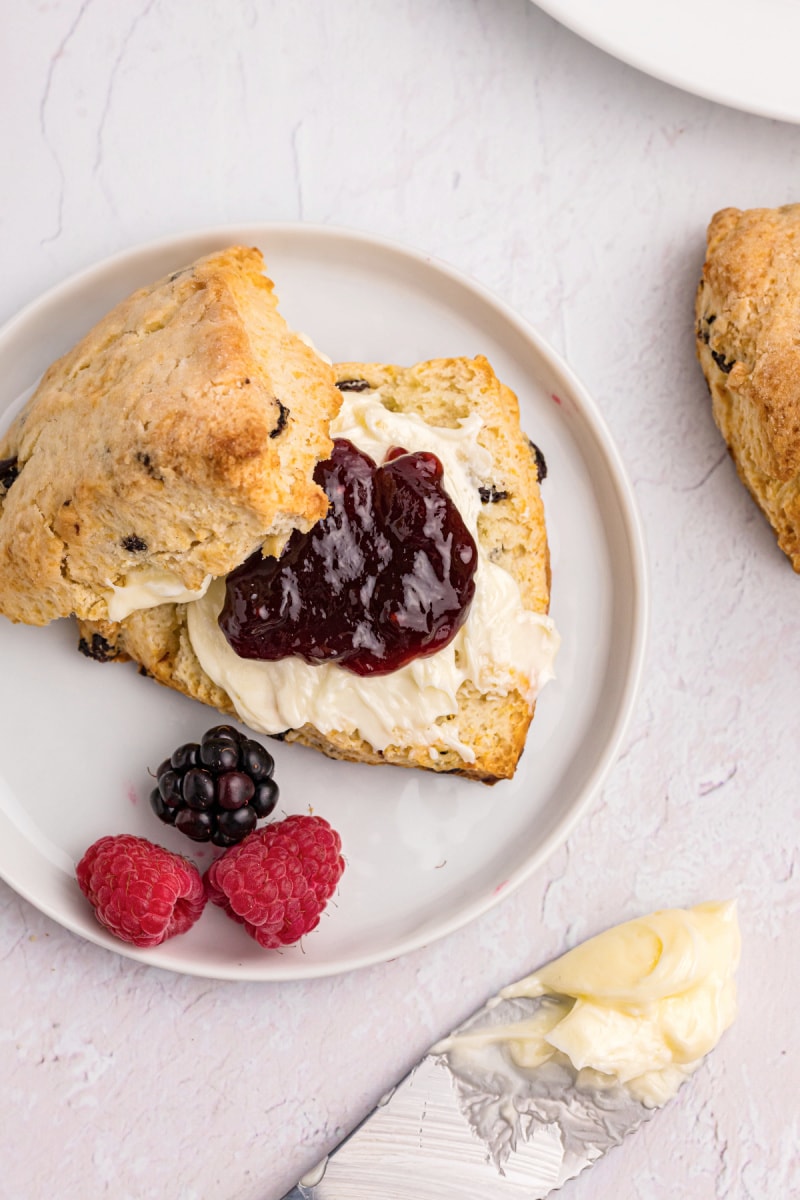
Best toppings for cream scones
Scones are so well-loved because of how diverse they are! You can serve them with almost any topping and a fresh from the oven scone is sure to be welcomed. A few toppings that I love to eat with a warm scone is an herbed butter, strawberry jam or even clotted cream.
How do you store cream scones?
Once the scones have cooled, place scones in a freezer bag and leave on the counter for up to 5 days. If you want them to stay longer, I like to wrap the bread in plastic wrap before placing it in an airtight container. Then they should stay fresh for up to 3 months in the freezer.
The Best Scones:
- Cranberry Vanilla Scones
- Fresh Strawberry Scones
- Cape Cod Blueberry Scones
- Lemon Poppy Seed Scones
- Cranberry Orange Scones
If you happen to be following the Weight Watchers WW plan, you’ll find a link to the WW Points on the recipe card below. (The points are on the higher side, but sometimes…..!)
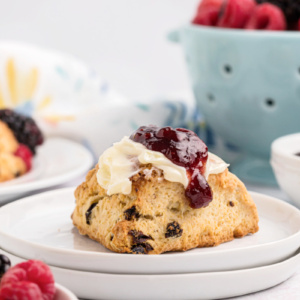
Cream Scones
Ingredients
- 1 large egg
- ⅔ cup heavy whipping cream
- 2 cups all purpose flour
- 2 tablespoons granulated white sugar
- 1 tablespoon baking powder
- ¼ teaspoon salt
- 5 tablespoons unsalted butter, chilled and cut into small pieces
- ¾ cup dried currants
Instructions
- Center a rack in the oven and preheat the oven to 400°F. Line a baking sheet with parchment or a silicone mat.
- In a small bowl, stir the egg and cream together.
- Whisk the flour, sugar, baking powder and salt together in a large bowl. Drop in the butter and, using your fingers, toss to coat the pieces of butter with flour. Quickly, working with your fingertips or a pastry blender, cut and rub the butter into the dry ingredients until the mixture is pebbly.
- Pour the egg, cream and currants over the dry ingredients and stir with a fork just until the dough, which will be wet and sticky, come together. (Don't overdo it.) Still in the bowl, gently knead the dough by hand, or turn it with a rubber spatula 8 to 10 times.
- Lightly dust a work surface with flour and turn out the dough. Divide it in half. Working with one piece at a time, pat the dough into a rough circle that's about 5 inches in diameter, cut it into 6 wedges and place it on the baking sheet. (At this point, the scones can be frozen on the baking sheet, then wrapped airtight. Don't defrost before baking, just add about 2 minutes to the baking time.)
- Bake the scones for 20 to 22 minutes, or until their tops are golden and firm. Transfer them to a rack and cool for 10 minutes before serving, or wait for them to cool to room temperature.
Notes
- It's best to use currants that are fresh out of the box. They're a little more moist and plump than those that may be have lying around for a while.
- If the currants you've purchased are rather dried out and hard, put them in a bowl with hot tap water for a few minutes and then drain thoroughly before adding to the scone dough.
Nutrition
Nutrition information is automatically calculated, so should only be used as an approximation.
